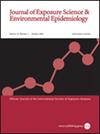2016年至2021年,全氟烷基和多氟烷基物质(PFAS)与美国县级癌症发病率之间的关系,以及饮用水中PFAS导致的癌症负担。
IF 4.7
3区 医学
Q2 ENVIRONMENTAL SCIENCES
Journal of Exposure Science and Environmental Epidemiology
Pub Date : 2025-01-09
DOI:10.1038/s41370-024-00742-2
引用次数: 0
摘要
背景:暴露于全氟烷基和多氟烷基物质(PFAS)与各种癌症有关。对饮用水和癌症中PFAS的评估有助于为生物监测和预防工作提供信息。目的:筛查癌症(2016-2021),并评估美国饮用水中PFAS污染的相关性。方法:我们从监测、流行病学和最终结果(SEER)项目中获得县级年龄调整后的癌症发病率(2016-2021)。公共饮用水系统中PFAS水平的数据来自第三次(UCMR3;2013-2015)和第五(UCMR5;2023-2024)未管制污染物监测规则。UCMR3测量PFOS、PFOA、PFNA、PFHxS、PFHpA和PFBS。UCMR5扩展了测量范围,包括PFBA、PFHxA、PFPeA和PFPeS。我们创建了PFAS检测指标,以及UCMR5高于最大污染物水平(MCLs)的浓度指标。PFOA和PFOS的mcl为4 ng/L, PFNA和PFHxS的mcl为10 ng/L。我们使用泊松回归模型评估PFAS检测或违反MCL与癌症发病率之间的关系,并对潜在的混杂因素进行调整。我们估计了可归因癌症病例的数量。结果:饮用水中的PFAS与消化、内分泌、口腔/咽部和呼吸系统的癌症发病率增加有关。发病率比(IRRs)为1.02 ~ 1.33。PFBS与口腔/咽喉癌的相关性最强(IRR: 1.33[1.04, 1.71])。在男性中,PFAS与尿癌、脑癌、白血病和软组织癌有关。在女性中,PFAS与甲状腺、口腔/咽部和软组织的癌症有关。根据UCMR3数据,饮用水中的PFAS估计每年导致4626例[95% CI: 1,377, 8046]例癌症病例,根据UCMR5数据,估计每年导致6864例[95% CI: 991, 12,804]例癌症病例。影响声明:这项生态学研究调查了两波(2013-2015年和2023-2024年)测量的饮用水中PFAS与2016年至2021年癌症发病率之间的关系。我们发现饮用水中的PFAS与器官系统中的癌症有关,包括口腔/咽、肺、消化系统、大脑、泌尿系统、软组织和甲状腺。一些癌症与PFAS的关系尚未得到广泛研究。我们还观察到PFAS与癌症风险之间存在性别差异。这是第一个检测饮用水中PFAS暴露与各种癌症风险的生态学研究。本文章由计算机程序翻译,如有差异,请以英文原文为准。

Associations between per-and polyfluoroalkyl substances (PFAS) and county-level cancer incidence between 2016 and 2021 and incident cancer burden attributable to PFAS in drinking water in the United States
Exposure to per- and polyfluoroalkyl substances (PFAS) has been linked with various cancers. Assessment of PFAS in drinking water and cancers can help inform biomonitoring and prevention efforts. To screen for incident cancer (2016–2021) and assess associations with PFAS contamination in drinking water in the US. We obtained county-level age-adjusted cancer incidence (2016–2021) from the Surveillance, Epidemiology, and End Results (SEER) Program. Data on PFAS levels in public drinking water systems were obtained from the Third (UCMR3; 2013–2015) and Fifth (UCMR5; 2023–2024) Unregulated Contaminant Monitoring Rule. UCMR3 measured PFOS, PFOA, PFNA, PFHxS, PFHpA, and PFBS. UCMR5 expanded measurements to include PFBA, PFHxA, PFPeA, and PFPeS. We created indicators of PFAS detection and, for UCMR5, concentrations above Maximum Contaminant Levels (MCLs). MCLs for PFOA and PFOS are 4 ng/L, and for PFNA and PFHxS are 10 ng/L. We used Poisson regression models to assess associations between PFAS detection or MCL violation and cancer incidence, adjusting for potential confounders. We estimated the number of attributable cancer cases. PFAS in drinking water was associated with increased cancer incidence in the digestive, endocrine, oral cavity/pharynx, and respiratory systems. Incidence rate ratios (IRRs) ranged from 1.02 to 1.33. The strongest association was observed between PFBS and oral cavity/pharynx cancers (IRR: 1.33 [1.04, 1.71]). Among males, PFAS was associated with cancers in the urinary, brain, leukemia, and soft tissues. Among females, PFAS was associated with cancers in the thyroid, oral cavity/pharynx, and soft tissue. PFAS in drinking water is estimated to contribute to 4626 [95% CI: 1,377, 8046] incident cancer cases per year based on UCMR3 data and 6864 [95% CI: 991, 12,804] based on UCMR5. The ecological study examined the associations between PFAS in drinking water measured in two waves (2013–2015 and 2023–2024) and cancer incidence between 2016 and 2021. We found that PFAS in drinking water was associated with cancers in the organ system including the oral cavity/pharynx, lung, digestive system, brain, urinary system, soft tissue, and thyroid. Some cancers have not been widely studied for their associations with PFAS. We also observed sex differences in the associations between PFAS and cancer risks. This is the first ecological study that examined PFAS exposure in drinking water and various cancer risks.
求助全文
通过发布文献求助,成功后即可免费获取论文全文。
去求助
来源期刊
CiteScore
8.90
自引率
6.70%
发文量
93
审稿时长
3 months
期刊介绍:
Journal of Exposure Science and Environmental Epidemiology (JESEE) aims to be the premier and authoritative source of information on advances in exposure science for professionals in a wide range of environmental and public health disciplines.
JESEE publishes original peer-reviewed research presenting significant advances in exposure science and exposure analysis, including development and application of the latest technologies for measuring exposures, and innovative computational approaches for translating novel data streams to characterize and predict exposures. The types of papers published in the research section of JESEE are original research articles, translation studies, and correspondence. Reported results should further understanding of the relationship between environmental exposure and human health, describe evaluated novel exposure science tools, or demonstrate potential of exposure science to enable decisions and actions that promote and protect human health.

 求助内容:
求助内容: 应助结果提醒方式:
应助结果提醒方式:


